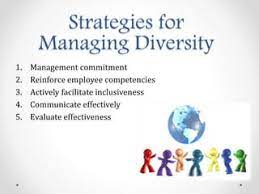Introduction to Workplace Diversity
Workplace diversity encompasses the variety of differences among people in an organization, including but not limited to race, ethnicity, gender, age, sexual orientation, religion, disability, and cultural background. In today’s globalized world, diversity in the workplace is not just a buzzword but a crucial aspect of organizational success.
Importance of Managing Diversity in the Workplace
Enhancing Creativity and Innovation
Diverse teams bring together individuals with unique perspectives, experiences, and ideas. This diversity of thought fosters creativity and innovation, leading to the development of more robust solutions and products.
Improving Decision-Making
When multiple viewpoints are considered, decision-making processes become more comprehensive and well-rounded. Different perspectives help identify blind spots and potential risks, leading to better-informed decisions.
Boosting Employee Morale and Satisfaction
Employees feel valued and respected when they see their organization embracing diversity. Inclusive environments promote a sense of belonging, which enhances morale, productivity, and employee retention.
Common Challenges in Managing Workplace Diversity
Communication Barriers
Language barriers, cultural differences, and varying communication styles can hinder effective collaboration and understanding among team members.
Stereotypes and Biases
Preconceived notions and unconscious biases can influence hiring decisions, performance evaluations, and interactions in the workplace, leading to discrimination and exclusion.
Resistance to Change
Some employees may resist diversity initiatives due to fear of the unknown, cultural inertia, or concerns about loss of privilege.
Strategies for Effective Diversity Management
Foster an Inclusive Culture
Leadership plays a pivotal role in creating an inclusive culture where all employees feel welcome, valued, and respected. This involves promoting diversity from the top down and addressing any instances of discrimination or bias swiftly and decisively.
Provide Diversity Training and Education
Offering diversity training programs can increase awareness, sensitivity, and understanding among employees. These programs should address unconscious bias, cultural competence, and inclusive communication.
Encourage Open Communication
Create channels for open dialogue where employees feel comfortable sharing their perspectives, concerns, and experiences. Encourage active listening and empathy to foster mutual understanding and trust.
Implement Fair Policies and Practices
Review and revise policies and practices to ensure they are equitable and unbiased. This includes recruitment and hiring practices, performance evaluations, promotions, and compensation structures.
Promoting Diversity at Leadership Levels
Diverse Hiring Practices
Implement proactive recruitment strategies to attract candidates from diverse backgrounds. Consider implementing blind resume reviews and diverse interview panels to mitigate bias in the hiring process.
Mentorship and Sponsorship Programs
Establish mentorship and sponsorship programs to support the professional development and advancement of underrepresented employees. Pairing junior employees with senior leaders can provide guidance, advocacy, and networking opportunities.
Creating Opportunities for Diverse Voices to Be Heard
Encourage participation in decision-making processes and leadership roles from employees with diverse backgrounds. Ensure that diverse perspectives are represented at all levels of the organization.
Monitoring and Measuring Diversity Initiatives
Establishing Key Performance Indicators (KPIs)
Define clear metrics to track the effectiveness of diversity initiatives, such as representation metrics, employee satisfaction surveys, and diversity training completion rates.
Conducting Regular Assessments and Surveys
Regularly assess the organizational climate and employee perceptions regarding diversity and inclusion. Use anonymous surveys and focus groups to gather honest feedback and identify areas for improvement.
Conclusion
Effective management of workplace diversity is not just a moral imperative but also a strategic advantage. By embracing diversity, organizations can unlock the full potential of their employees, drive innovation, and achieve sustainable growth. By implementing inclusive policies, fostering open communication, and promoting diverse representation at all levels, organizations can create environments where everyone can thrive.
